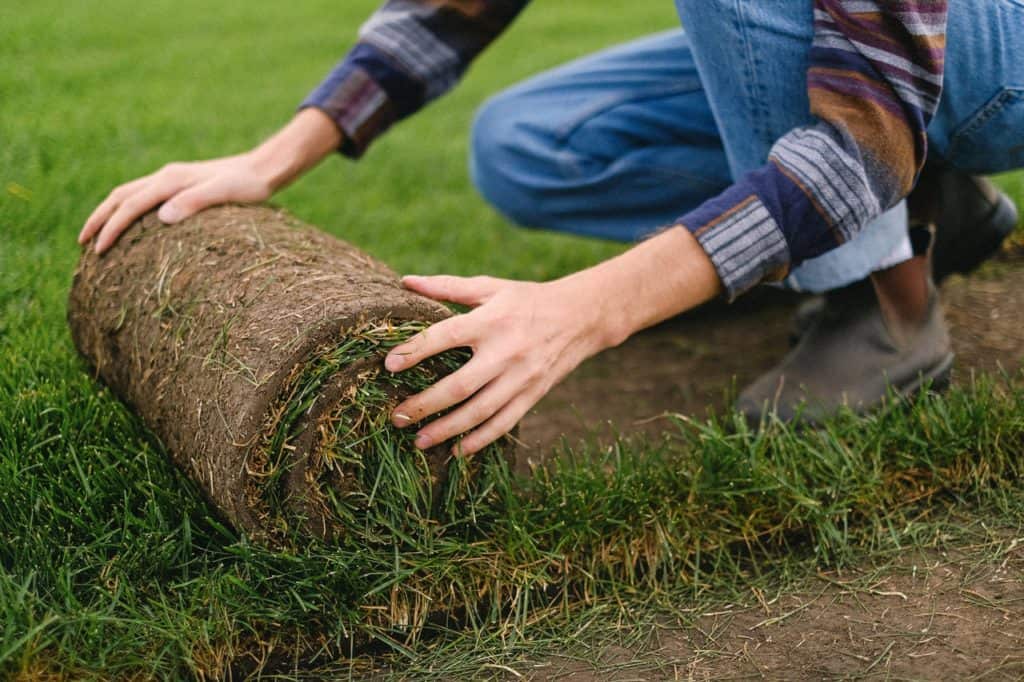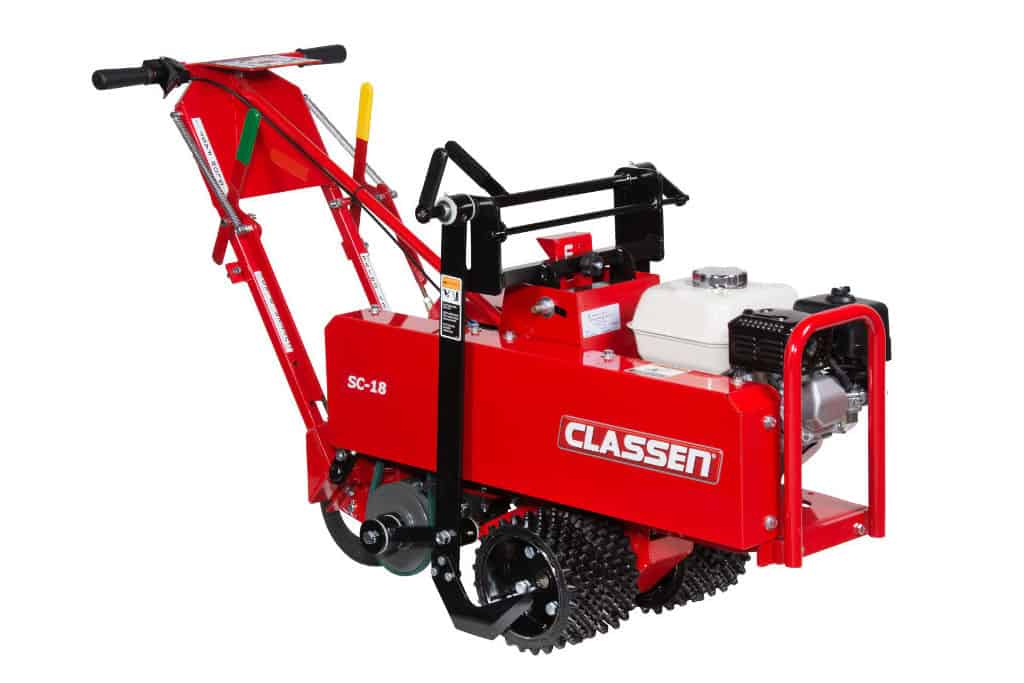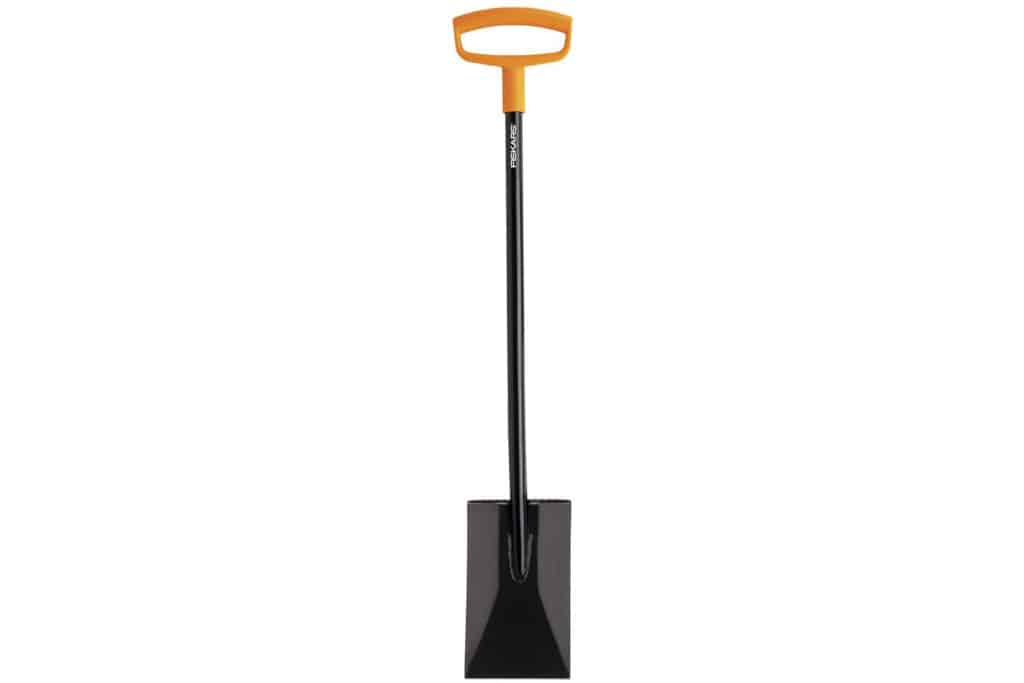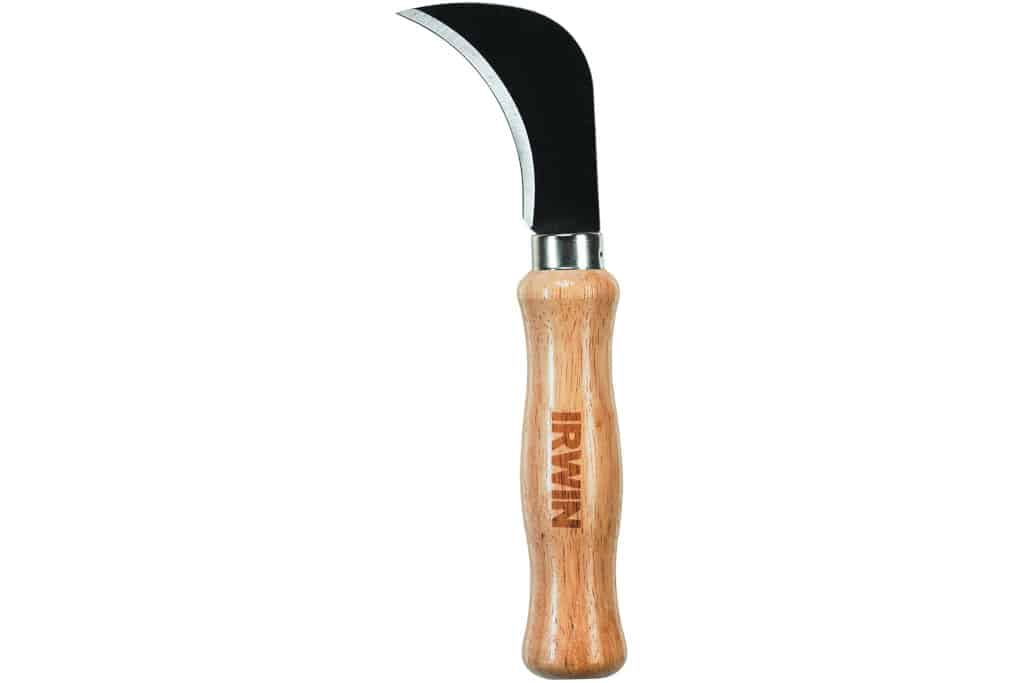You might be looking into ways for grass removal but you’re unsure how to go about it, or what tool to use. I’m here to help you answer all the questions relating to sod removal, give you some tips, and help you choose the right sod cutter suited for your needs.
Replacing sod or grass can help keep your property value high, as well as make you happier while living in a house with fresh new grass and beautiful lawn.
When selecting the type of new grass to plant after sod removal, consider factors like climate, soil type, and foot traffic to ensure a vibrant lawn year-round.
How Hard Is It to Use a Sod Cutter?
Both manual and electric sod cutters are surprisingly easy to use and very satisfying to roll up the sod pieces to throw out. They’re super simple to work with and will save you a ton of time. Manual working with a hoe can take away a weekend. A sod removal tool will cut that time down to a morning.
The more difficult way of sod cutting could be working with a spade (square) shovel, or with a knife, and I only recommend these for smaller patches.
Periodic maintenance, like blade sharpening for manual sod cutters, ensures consistently neat cuts and can extend the tool’s lifespan.
How Much Does Sod Removal Cost?
Sod removal cost includes:
- renting the sod cutter tool ($95-125 for the entire day)
- transporting it to your home ($50-100)
- disposing of the sod afterwards ($50-100)
- buying the new sod ($2.75-8 per roll covering 10sq feet)
Sod cutters are usually rented, whether it be a manual one or a power sod cutter machine. Most of them can be bought as well. Buying a power sod cutter (walk-behind) isn’t generally done, but they are rented from your local hardware store.

Sod cutter cost to rent/buy:
| to rent (4 hours) | to rent (a day) | to buy | |
| Power (Walk-behind) Sod Cutter | $55-75 | $95-125 | above $5k |
| Manual (Kick) Sod Cutter | $15-20 | $20-30 | $75-110 |
| Sod Cutter Knife | – – | – – | $20-30 |
| Edger Tool | $20-30 | $30-50 | $100-200 |
| Spade shovel | – – | – – | $20-50 |
Remember that when you rent a sod cutter, you need to transport it back home. So unless you have a truck, you’ll need to rent one or pay for it to get delivered. If you’re throwing away the sod, you need to transport that as well. If you’re paying for these services, add at least $50-75 for each one.
However, instead of disposing of the old sod, consider repurposing it in compost piles, which can provide nutrient-rich soil for future gardening projects.
Additionally, when budgeting for sod removal, don’t forget to factor in potential costs for blade replacements or maintenance, especially if you’re considering purchasing a sod cutter for long-term use.
What Is the Easiest Way to Cut Sod?
The easiest way to cut sod is probably by renting a sod cutter, such as a kick sod cutter, or the power sod cutter (motorized). You can remove sod on all kinds of grass and slopes as well, up to and above 45 degrees. Sod cutter saves a good bit of effort.
For odd-shaped areas, you may need a knife to cut the sod, but that too isn’t that difficult. You could either use a kitchen knife or buy a knife specifically made for landscaping. Don’t forget to water the sod for 1 to 3 days before removing it.
It’s also fairly easy to lay the new sod yourself. Make sure to level the area as much as possible before laying it, and that’s easier if you previously removed the grass. Now just lay the new sod in brick patterns, as close to each roll as you can, and avoid any overlaps.
Remember to press down the edges of the sod firmly to encourage roots to establish quickly, ensuring rapid growth and preventing gaps or lift-off.
Here’s a video with some great tips on how to install sod:
What Is the Fastest Way to Remove Sod?
If you want to remove the soil and leave the ground nicely leveled, then the fastest way is with a sod cutter machine, which is easy to use and cuts the sod fast. If you’re not going to use the soil, then you can just go at it with a tiller, and dump the soil somewhere else, though it may create more work by having to level the soil again, break up the clumps and rake it.
Disclaimer: Some of the links in this article are affiliate links that may provide me with a small commission at no cost to you. I only recommend only the best products and services. Read about affiliate disclosure in my privacy policy.
What Is the Best Tool to Remove Sod?
1. Power Sod Cutter

A power sod cutter is a motorized machine that makes your job much easier and saves you a lot of time. It’s probably the best sod cutter option you can choose. Commercial sod removers always do a nice job, and the lawn is left much neater and leveled than if you used something like a tiller, or did manual shoveling.
They’re also called a “walk-behind” sod cutter because you walk behind it as it does its job. There isn’t a lot of pushing or anything like that and usually works like a dream, which is why it’s probably the easiest way to cut sod and is worth every penny of the rental price.
If you can afford $75 for 4 hours, or $110 for a day, then go for it. This kind of motorized sod remover is well worth your time and effort
2. Manual (Kick) Sod Cutter

Kick sod cutter can also get the job well done, regardless of requiring manual work. It takes a bit of a muscle to work with depending on the sod type, but it’s not that hard. It’s called “kick” sod cutter because you have to kick it to work with it. It may sound crude, but it’s surprisingly efficient, as you can see from the video below.
You can use it to cut narrow strips of the sod of your lawn, which you can then roll up to be transported to another place. You can even roll them on the ground and transport them like a wheel to another part of your lawn.
Kick sod cutter rental price isn’t that high, about $20 to $30 a day, and you can buy them for below $100. Depending on the softness and the amount of grass in the ground, this can be a great choice as a grass removal tool.
3. Square/Spade shovel

There are several types of spade shovel, but a square, the garden shovel is a decent sod removal tool. They can be used for loose soil, edging, sod cutting, and have several other uses. Shoveling requires a bit of work compared to the tools above, but if you have time, you can do a job well done
A spade shovel is a basic tool for grass removal and requires some muscle to work with, but it’s perfectly fine if you need to remove small patches of sod, and you have the time to work on it.
Here’s a video to see how to remove sod with a shovel:
4. Hook knife

Hook sod cutter knives have short blades, usually 3 to 4 inches long, that curve into a hook at the end. A sod cutter hand tool such as this one can be used for many purposes, from cutting sod in your lawn to weeding your garden, removing vines from trees to opening boxes. They’re can be easier to use than regular knives when cutting sod.
Hook knives can work well as a sod remover, as they are sharp and don’t wobble while you hold them. This one, in particular, is of good quality, is cheap, and the handle is comfortable enough.
There are good hook knives at Home Depot as well, but this one seemed of good quality, plus it was cheaper. Give it a shot.
5. Sod Cutter Knife

This serrated knife for cutting sod is a good option when you’re unable to rent a kick sod cutter or a motorized one. They’re also great to cut the sod for odd-shaped areas, which is oftentimes necessary.
Serrated knives give better results when cutting sod than regular ones. Make sure to water your sod at least one day in advance, so it’s easier to work with, especially for a knife. You want the sod to be moist, but not soggy. You need to use a sewing motion while you cut.
Keep in mind that using knives to cut sod isn’t an ideal option, as you could cut yourself or even leave an uneven cut of the sod. There are better tools for cutting sod, like the ones above.
Should I water before using a sod cutter?
You should always try to get the ground moist before using a sod cutter on it. Too dry and the sod won’t roll up and may crumble, but too soggy and it’ll be difficult and too heavy to work with.
How deep will a sod cutter go?
Most sod cutters go about 2.5 inches deep, with 2 inches being the recommended depth to go. When cutting sod, make sure you’ve got the depth set right so you don’t need to make a second pass, or remove more soil than necessary.
Will a sod cutter level the ground?
Sod cutter leaves a smooth, clean soil layer ready for rolling the new sod onto. There may be a few areas where you’d need to level a bit, or where the sod cutter couldn’t reach, but generally, you’ll be left with a leveled ground with very little work to be done afterward.
Is it better to use a sod cutter or tiller?
A sod cutter is generally the better choice for a grass lawn because it can cut the sod nicely for you to roll up, and leaves very little work afterward. For dryer land with less grass, a tiller might be a better choice, but it may require much more work because you need to break up the clumps, rake it up, level it, and then lay new sod.
If you’re dealing with a lawn that has significant weed infestation, using a tiller followed by soil treatments can help in eradicating those persistent weeds before laying the new sod.
Alternatively, you can just use glyphosate/RoundUp to kill the grass, then lay the new sod on top.
Will a sod cutter work on dirt?
If it’s an extremely dry clay, the sod cutter might just bounce off and may be hard to work on. Typically, a sod cutter requires a sod to cut, and in case you don’t have much grass, you may have an easier time using a tiller instead, and moving the dirt manually.
Can you remove sod in the winter?
Depending on how frozen the ground is, you may be able to remove the sod in the winter, if the ground is soft enough. To check how frozen it is, stick a long screwdriver in it. You want the sod cut to happen right at the substrate, and the depth of 3 to 6 inches usually does the trick. Use a hand pick to edge the yard, and try to peel back the soil. If the soil seems soft enough to peel it back, you should be able to remove it.


![How Long to Wait Before Mowing New Grass? [Guide + FAQs] push mower cutting grass on lawn](https://howmonk.com/wp-content/uploads/2022/06/push-mower-cutting-grass-on-lawn-300x200.jpg)




![How Much Do Shipping Containers Cost? [Full Guide] Shipping Container retail shop (cost)](https://howmonk.com/wp-content/uploads/2020/03/Shipping-Container-retail-shop-300x200.jpg)




